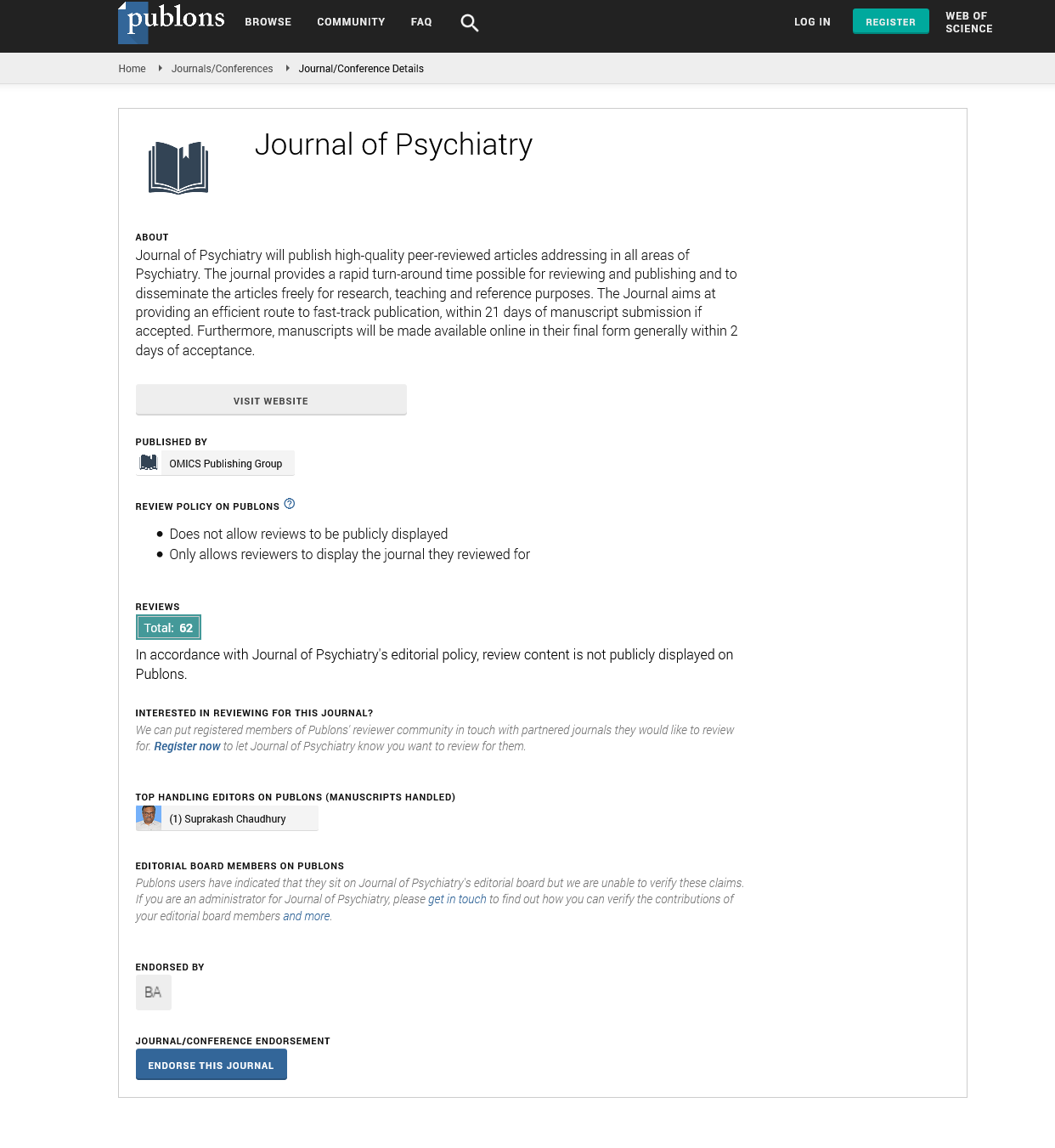Indexed In
- RefSeek
- Hamdard University
- EBSCO A-Z
- OCLC- WorldCat
- SWB online catalog
- Publons
- International committee of medical journals editors (ICMJE)
- Geneva Foundation for Medical Education and Research
Useful Links
Share This Page
Open Access Journals
- Agri and Aquaculture
- Biochemistry
- Bioinformatics & Systems Biology
- Business & Management
- Chemistry
- Clinical Sciences
- Engineering
- Food & Nutrition
- General Science
- Genetics & Molecular Biology
- Immunology & Microbiology
- Medical Sciences
- Neuroscience & Psychology
- Nursing & Health Care
- Pharmaceutical Sciences
Childhood depression and neuroanatomical changes: Systematic review
Euro Global Summit and Medicare Expo on Psychiatry
July 20-22, 2015 Barcelona, Spain
Matheus Felipe Aguiar Santos
Posters-Accepted Abstracts: J Psychiatry
Abstract:
Introduction: The depressive disorder in children is a common condition that affects the physical, emotional, social development and often persists into adulthood. Childhood depression is a public health problem affecting, in the world, 2.8% of children under 13 years old. In Brazil, the prevalence of depression in childhood is 0.2% and 7.5% for children under 14 years old. However, the theoretical contributions about the neuroanatomical changes in patients with childhood depression are quite inconsistent. Therefore, the purpose is a systematic review about the neuroanatomical changes present in patients with childhood depression. Methods: Systematic review of the literature January 1, 2010 to January 16, 2014 to the descriptors ?Depression? (MeSH), ?Child? (MeSH), ?Anatomy? (MeSH) and their respective terms in English on the basis data: MEDLINE and SciELO. Results: Neuroimaging studies have shown that the hippocampus is about 4-5% lower in patients with major depression than in healthy controls, and this reduction in hippocampal volume constantly noted in children with a family history of major depressive disorder. In addition, the orbitofrontal cortex, cingulate gyrus, and the basal ganglia were also found reduced in patients with major depression. Conclusion: Taking into account the possible influences and structural and functional brain changes over depressive disorder, longitudinal studies are necessary from the use of neuroimaging methods, in order to understand what the possible variations in the cytoarchitecture of the nervous system that best indicate and /or that are pathognomonic in childhood depression.

